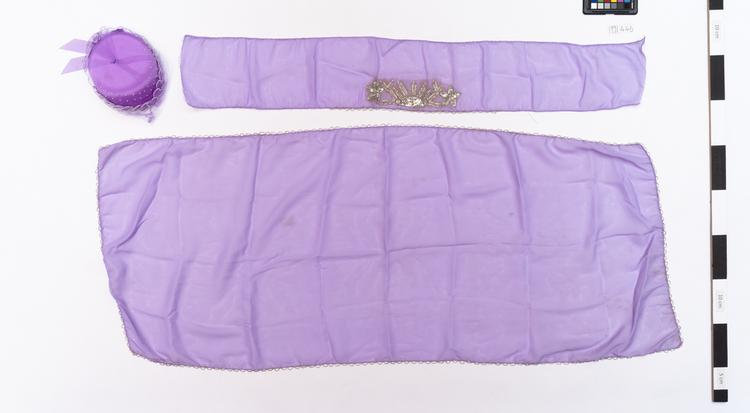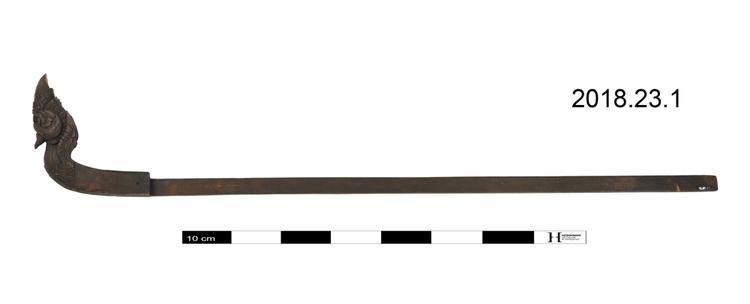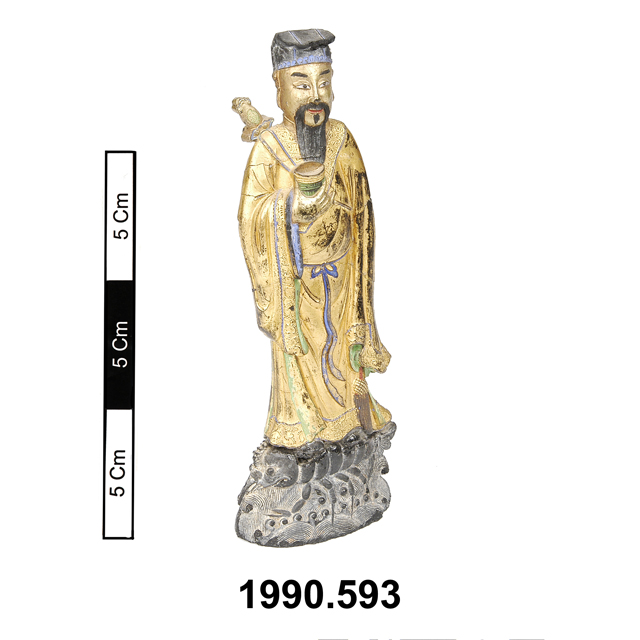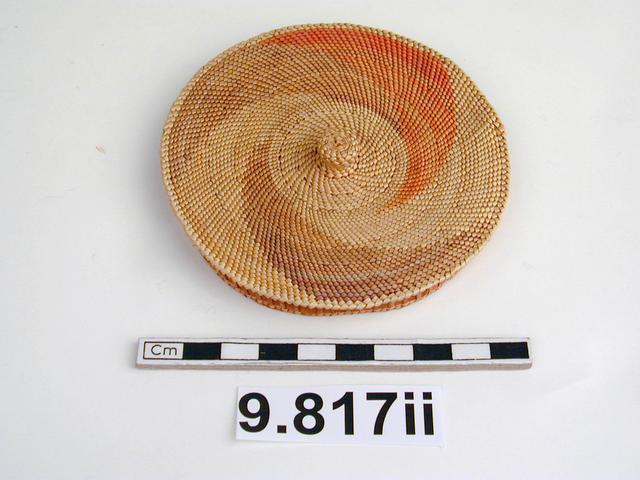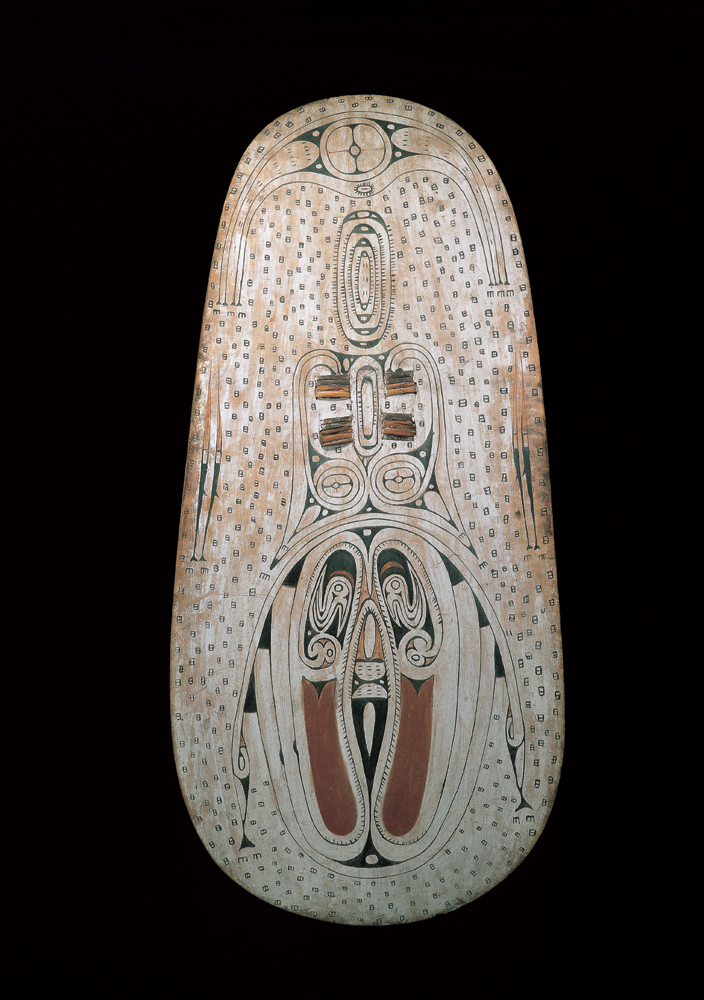
Painted war shield, vayola, constructed from a vertically curved but horizontally flat board of wood, which is pierced for the attachment of a split-bamboo handle. The entire surface is painted with a complex and mysterious composition of white black and red scrollwork, for the meaning of which many different interpretations have been proposed.
War Shield, Vayola, Trobriand Islands, Massim, Papua New Guinea. Warfare in the Trobriand Islands was pursued with long throwing spears, wooden sword-clubs, and shields such as these. In the pre-Christian period, before a battle, the village magician would cast a spell over each shield to make them invulnerable to spears. He did this by reciting a magical formula over its painted surface from centimetres away, so that his breath would flow across the shield’s surface. Trobriand’s war shields are always painted in a very similar way, but no two designs are exactly the same, and there is little agreement about what these designs ‘mean’. Some interpreters have viewed vayola as showing flying witches (mulukwausi), the most terrifying spirits in traditional Trobriand’s mythology. Others have viewed them as depictions of sexual intercourse, a gross insult to the enemy. Others view the three major ‘zones’ of the shield’s decoration as representing the head, throat and abdomen of a human figure; for the Trobriand Islanders, magical power was stored in the belly, and the design may represent magical power coming out into the world. Wood, cane, pigment. Late 19th century. Formerly in the private collection of Mr James Edge Partington.
fighting



